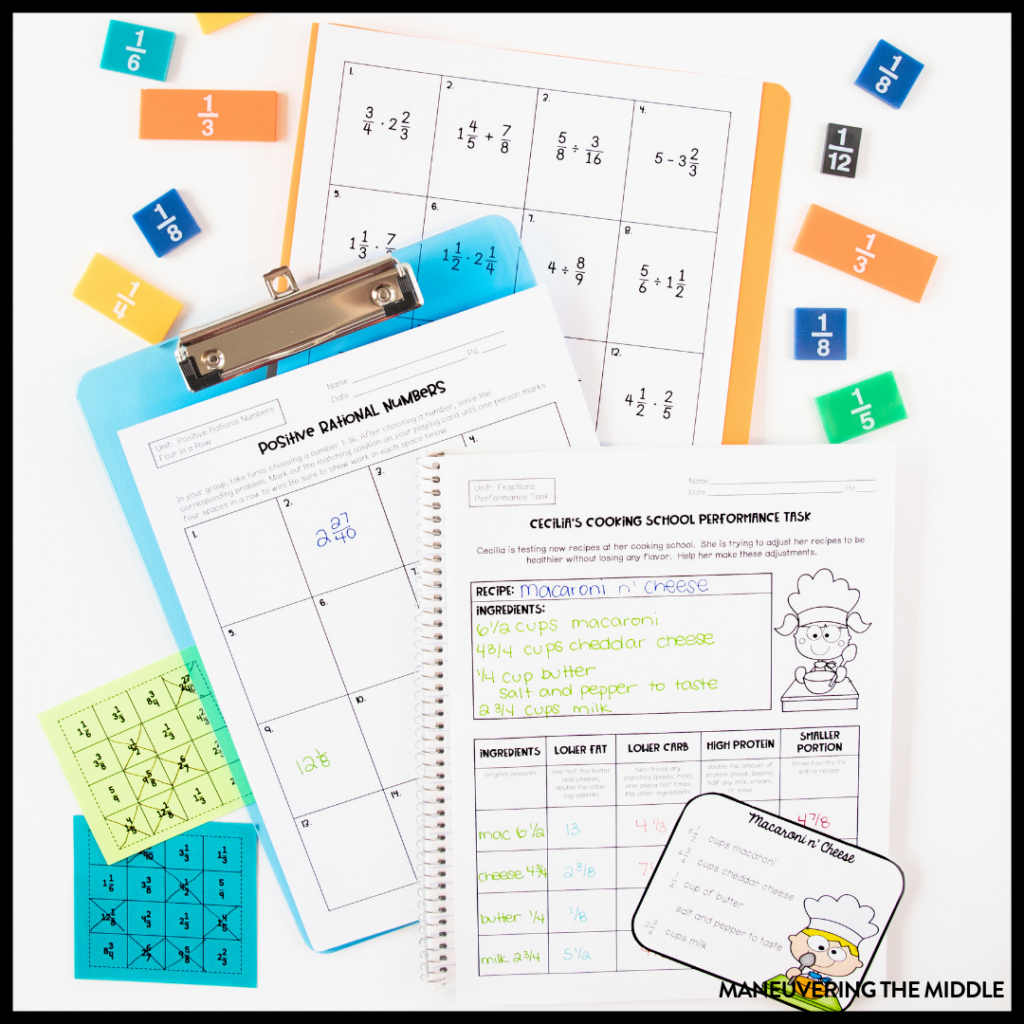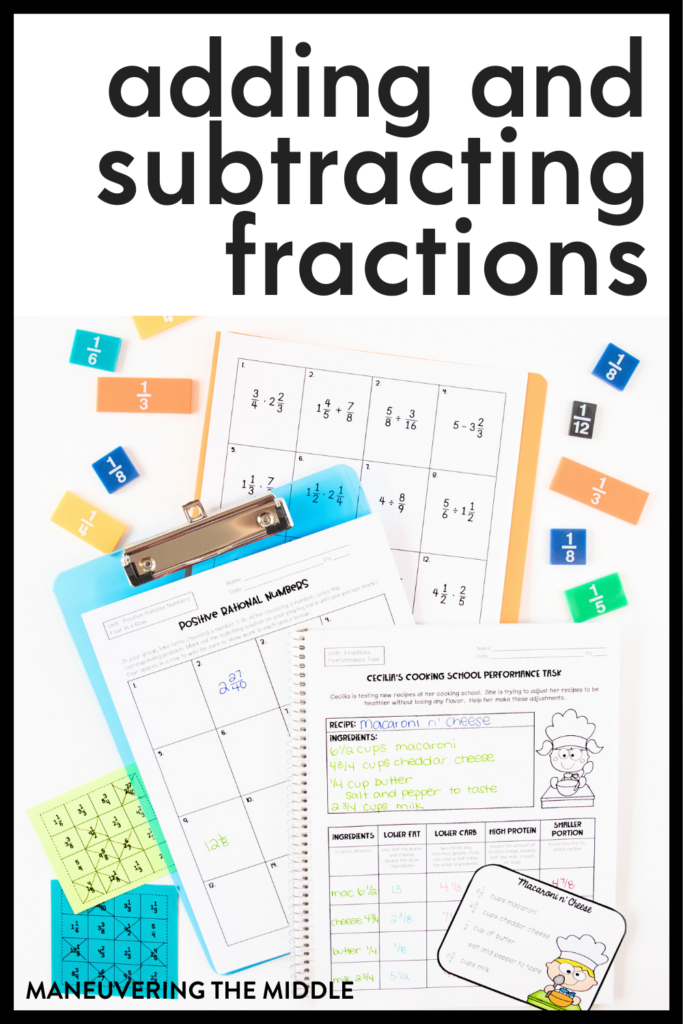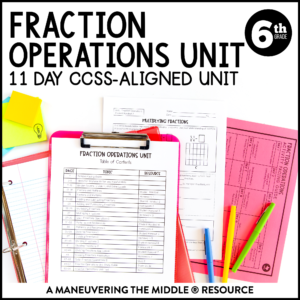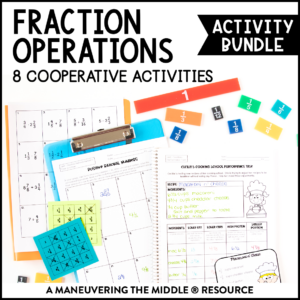If your students would rather convert fractions to decimals then add and subtract fractions, then this post is for you! I don’t blame students for being more comfortable with decimals – I am too! But anytime I am confronted with a sewing or home improvement project, and I need to use a standard ruler, I am grateful that I can add and subtract fractions with ease. Let’s see if some of these tips will help!

Representing Equivalent Fractions
Before we jump into any operations, our first priority is making sure our students understand how to find equivalent fractions. I recommend spending a whole lesson on this skill due to how frequently students will need to access this knowledge to be successful adding and subtracting fractions with unlike denominators.
TIP #1 Practice Finding Equivalent Fractions Using Models
“Solve word problems involving addition and subtraction of fractions referring to the same whole, including cases of unlike denominators, e.g., by using visual fraction models or equations to represent the problem.” CCSS.MATH.CONTENT.5.NF.A.2
This common core standard is clear, so it makes an easy argument to expose students to finding equivalent fractions using models. Remember that models are not just fractions strips, but circles and number lines too.
I love how our MTM lesson has students finding multiple equivalent fractions using the model below.
Tip #2 Practice Finding Multiple Equivalent Fractions
Don’t stop at finding 1 or 2 equivalent fractions. Prepare your students for finding the least common multiple by finding 5 or more equivalent fractions.
Adding Fractions Using Area Models
If it were practical to draw a model every time, I would have students draw a model every time. Fraction operations are so concrete when you have a visual representation to reference. Unfortunately, numbers are infinite and it does not always make sense.
Let’s talk about a new-to-me method of using area models to add fractions with unlike denominators:
First, you will want to clarify that fractions can only be added together if they have the same denominator. The best comparison I have is to explain to students that you can’t add 3 feet and 2 inches to get 5. Each fraction represents a different “size” which is why you need a common “size.” It is also why the denominators aren’t added together.
Below, you will see ⅓ + ⅖. Notice that one fraction has vertical lines and one has horizontal lines. This is on purpose.
You will explain to students that we can’t add the fractions until they are broken into the same “sized” pieces. Then you will divide each fraction model by the other fraction’s denominator.
Now your students have 2 models with equal denominators that can now be added together easily! Where has this been my whole life?!
Finding a Common Denominator
In our last example, we basically found the common denominator by multiplying the denominators of each addend which leads me to another method in finding the common denominator: listing the multiples of each denominator and finding the least common multiple.
I do have a little hack for the latter method. Shoutout to Mrs. Henry who taught this to me. It keeps students’ work organized and it sets them up nicely for ratio tables in the future.
Let’s look at 3/4 + 1/10. Here is the hack that will help students who typically struggle with multi-step types of problems. Write your original fractions and create a list of equivalent fractions not stopping until you find a common denominator. There is something about making a table that really helps students’ work stay organized. There are less opportunity for mistakes too!
Subtracting Fractions Using Number Lines
In both TEKS and CCSS, pictorial models are referenced, and I thought this released STAAR question gives us insight to how this skill is assessed.
This is a perfect example of how students could use the process of elimination to get down to one answer, but if students have never seen fraction problems solved with the use of a number line, they may panic and pick something that makes zero sense. Therefore, exposure to various models is always recommended.
Going beyond this problem for a moment, this is my plug for using a ruler for some addition and subtraction problems. You can print a ruler if you don’t have a class set, but if students can familiarize themselves with the teeny tiny lines and how they correspond with 1/2s, 1/4s, 1/8s, and 1/16s, then that is some real-life application right there!
In our MTM curriculum, we keep the rigor high which is why you can see there are multiple answers in our example below:
The clincher and real test of understanding is figuring that 2/8 is equal to 1/4.
Teaching adding and subtracting fractions is a marathon and not a sprint. Because of that, this is a two-part series, so be sure to come back to discuss more complex addition and subtraction problems.
Can’t get enough fractions?
Multiplying Fractions and Dividing Fractions



